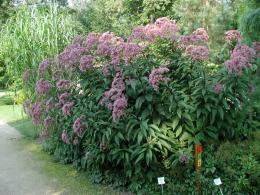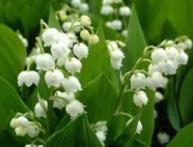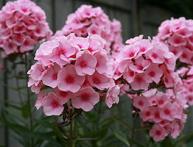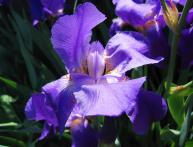Posonnik: planting, care, plant characteristics

The sill is a beautiful perennial with which you can decorate your summer cottage. The plant is not particularly whimsical, so even a beginner can cope with its cultivation. The window sill does not require support, landing and its care is simple. But, still, it is worth knowing some nuances.
Content:
- Features of the plant
- Rules for planting and care
- What are the growing features?
- Reproduction techniques for saplings
Features of the plant
This plant has a powerful root system. Its stems stand straight, they can grow up to 1.5-2 meters in length. At the top, original inflorescences are formed, which reach a diameter of up to a quarter of a meter. The foliage of the sapling is large, which appears along the entire stem. The inflorescences unite small flowers that are painted snow-white, pinkish or purple.
Flowering begins in mid-summer. This plant is often found in tropical Africa. In our country, purple window sapling has gained popularity. In order for this plant to delight you with its flowering, you need to familiarize yourself with the simplest planting rules and care.
Rules for planting and care
Anyone can plant a window sill. To do this, it is recommended to go to specialized stores where you can purchase compact seedlings. You can also propagate the plant yourself. Before you buy seedlings, you should inspect the root system.It must be strong, otherwise there is a risk that the seedlings will not take root. In addition, it is not recommended to purchase seedlings when the rhizome is already visible from the hole in the pot.
To prepare a flower bed, it is worth carrying out the following manipulations:
- It's good to dig up the soil
- Add compost
- Remove huge rocks
- Level the bed with a rake
- Dig holes, between which there should be about 60-80 cm
After this you can start landing. To do this, you should do the following procedures:
- Remove seedlings from pots.
- To do this, you need to turn the pot over and knock on its bottom.
- Plant the seedlings in a permanent place.
- Fill the holes with soil and compact everything well.
Next, you should water the plants and the area between them to retain moisture. If a summer resident decides to make a whole flower garden, then it is better to plant the window sill at the back, since the plant stands out in quite a large height. This flower perfectly complements the flower garden. But it also looks beautiful when planted alone.

Many summer residents decorate the banks of reservoirs with such a plant, combining it with cereals and other plantings. Fences are ideal for the development of window sills. With its help, you can hide the shortcomings of buildings, which is often done by the owners of summer cottages. This is not an aggressive plant, so it does not have a negative effect on other flowers or suppress their development.
What are the growing features?
In order for the window sill to develop normally, you should adhere to the following rules regarding growing:
- Places that receive full sun are ideal for this plant. But it grows normally in partial shade. If it does not have enough light, then flowering may not occur.
- Pokonnik is classified as a winter-hardy flower.For this reason, it does not need protection from the cold.
- The plant needs regular watering. It should be plentiful, since the flower develops well in moist soil.
- Planting should be done on fertile soil. It should be loose and rich in humus. But such a plant will not develop on sand. Therefore, compost is initially added to sandy soil.
It is necessary to carry out 3 feedings. This procedure is first performed in the spring, then in June. The last feeding is carried out when the buds are formed. If there is a need to replant the plant, then it is better to do this in the autumn or spring. But you shouldn’t get carried away with this procedure. In addition, an adult plant has a wonderful decorative appearance.
There is more than one method of reproduction. Therefore, each person chooses the method that suits them. In any case, the plant takes root well. By studying this flower, you can create a small calendar regarding its cultivation. Namely:
- Spring period. Planting and fertilizing those window sills that remained for the winter.
- Summer period. Shrub care.
- Autumn period. Circumcision bushes after flowering.
- Winter period. Rest.
It is also worth remembering that there are various pests and diseases that prevent various plants from developing normally. But the window sill is considered resistant to their attack. But sometimes this plant suffers from leaf miners. To get rid of them, it is necessary to remove foliage that is damaged.
Reproduction techniques for saplings

There is more than one way to propagate this plant. Using seeds. Seeds are sown in March in greenhouse conditions or on a windowsill.Because they are too small, they are simply covered with earth on top. Next, the planting must be watered using potassium permanganate. Shoots will begin to appear in 2-3 weeks.
During this period, it is necessary to remove the film that initially covers the planting. When about 5 leaves appear, then it is worth diving. When the frosts pass, then you can move the young plants into open ground. By dividing the bush. When the bushes reach 5 years of age, they can be divided for reproduction.
This is done in spring or autumn. But experienced gardeners advise dividing the bushes in the spring, as soon as the plant begins to grow after wintering. Using a shovel or knife, the root system is divided.
There should be 3 buds left in each part. After planting, it is worth watering the plants. With the help of kidney renewal. This procedure is done in the spring, when the shoots grow up to 5 cm. The buds are cut out, touching part of the root. They are placed in boxes. There should be about 7 cm between each plant. When the seedlings take root, they are moved to open ground.
Using cuttings. This propagation is carried out in June, when the length of the shoots increases significantly. Cuttings are cut, which should have 3 buds, and root them. Transplantation into open ground occurs in August. So, the sapling is a beautiful plant. In order for it to please you with its flowering, you should follow simple rules.
Video about the sapling plant:








